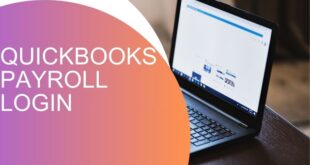Introduction
In today’s rapidly evolving workplace, learning and development (L&D) professionals are tasked with creating personalized learning experiences that not only cater to the individual needs of employees but also align with broader organizational goals. The CIPD unit 5LD03 Facilitate Personalised and Performance Focused Learning, provides a robust framework for HR professionals to create and manage learning environments that are tailored to individual performance while contributing to overall business success.
This blog will explore the key concepts of the 5LD03 unit, detailing why personalized and performance-focused learning is critical, how to effectively implement it, and the benefits it offers for both employees and organizations.
What is 5LD03 Facilitate Personalized and Performance-Focused Learning?
5LD03 is a unit within the CIPD Level 5 Diploma in Learning and Development that focuses on creating learning solutions that are individualized and aligned with specific performance outcomes. This course enables HR and L&D professionals to develop strategies that consider personal learning preferences, career goals, and performance targets, ultimately driving productivity and employee engagement.
The Importance of Personalized Learning in Today’s Workplace
Personalized learning acknowledges that no two learners are the same. By creating individualized learning paths, HR professionals can address the unique strengths, weaknesses, and learning preferences of employees. This approach can lead to:
- Higher engagement: Employees are more likely to engage with learning materials that resonate with their personal needs.
- Increased retention: Tailored learning increases the retention of knowledge and skills.
- Enhanced productivity: Employees perform better when they can learn in a way that suits their preferences and goals.
However, personalized learning needs to be integrated with performance-focused outcomes to align individual development with the organization’s needs.
How Personalized Learning Aligns with Performance-Focused Goals
While personalized learning aims to cater to individual learning styles, performance-focused learning is about ensuring that the learning efforts contribute directly to improving the employee’s performance at work. Here’s how the two concepts work hand in hand:
- Customizable Training Programs: Learning programs can be adjusted to address both the personal learning preferences of employees and the specific performance metrics they need to meet.
- Clear Objectives: By combining personalization with a focus on performance outcomes, learners have a clear understanding of the skills and knowledge they need to acquire to meet their job expectations.
- Real-Time Feedback and Adjustments: Personalized and performance-focused learning allows for continuous monitoring and feedback, ensuring that learners stay on track and meet their development and performance goals.
Strategies for Facilitating Personalized and Performance-Focused Learning
Creating a learning experience that balances personalization and performance can be challenging. Below are some practical strategies that can be implemented to facilitate this approach effectively.
1. Conduct Learning Needs Assessments
Before designing personalized learning programs, it is essential to conduct a thorough assessment of each learner’s needs. This could include evaluating:
- Current skill levels: Understanding where the employee stands in terms of skills and knowledge.
- Learning preferences: Identifying whether they prefer visual, auditory, or kinesthetic learning methods.
- Career aspirations: Aligning their personal growth with business goals.
Once this assessment is completed, customized learning plans can be created that match individual needs while addressing the required performance outcomes.
2. Set SMART Learning Objectives
The key to performance-focused learning is to set SMART (Specific, Measurable, Achievable, Relevant, and Time-bound) goals. These objectives help learners track their progress and provide a clear direction on what needs to be achieved.
For example:
- Specific: The learner will master the use of a new software tool.
- Measurable: The learner will complete a training module and pass a skills assessment.
- Achievable: The training is broken down into manageable steps.
- Relevant: The skill is directly related to improving job performance.
- Time-bound: The training will be completed within three months.
3. Incorporate Blended Learning Techniques
Blended learning is a method that combines traditional instructor-led learning with digital, self-paced learning materials. This approach allows for flexibility in terms of both personalized learning preferences and performance tracking. Key elements of blended learning include:
- E-learning modules: These can be tailored to individual learning speeds.
- Workshops: Live workshops allow for direct interaction and feedback.
- On-the-job training: Employees can apply what they’ve learned in real-world scenarios, focusing on improving performance.
4. Use Performance Metrics for Continuous Improvement
Facilitating personalized learning doesn’t stop at providing customized learning materials. Continuous assessment is critical to ensuring that learning efforts translate into improved performance. This can be achieved by:
- Tracking key performance indicators (KPIs): Regularly monitor whether learning is resulting in performance improvements.
- Conducting follow-up evaluations: Gather feedback from learners and managers to assess the impact of learning programs.
- Adjusting learning paths: Based on performance data, make necessary adjustments to learning plans.
The Role of Technology in Personalized and Performance-Focused Learning
The use of technology in learning and development has revolutionized how personalized learning is delivered. Learning Management Systems (LMS), artificial intelligence (AI), and data analytics can all enhance the facilitation of both personalized and performance-driven learning.
- Learning Management Systems (LMS): LMS platforms allow for easy customization of learning paths, enabling employees to access personalized learning content that is relevant to their role and performance goals.
- AI-Powered Tools: AI tools can provide learners with personalized recommendations based on their learning history and performance data.
- Data Analytics: Data can be used to measure the effectiveness of learning programs in improving performance, allowing for constant optimization.
Benefits of Personalized and Performance-Focused Learning
Implementing personalized and performance-focused learning offers numerous benefits to both employees and organizations:
1. Increased Employee Engagement
When learning is tailored to an individual’s preferences and career goals, they are more likely to engage and remain motivated throughout the learning process.
2. Better Knowledge Retention
Personalized learning ensures that learners acquire and retain the knowledge that is most relevant to their roles.
3. Improved Job Performance
By focusing on specific performance outcomes, personalized learning ensures that employees develop the skills they need to excel in their roles.
4. Higher ROI for Organizations
Organizations benefit from personalized and performance-focused learning because it results in higher productivity, improved performance, and a more skilled workforce.
Challenges in Implementing Personalized Learning
Despite its many benefits, implementing personalized learning comes with its own set of challenges:
- Resource Intensive: Creating individualized learning paths can require significant time and resources.
- Balancing Personalization with Standardization: It can be difficult to ensure consistency across the organization while providing personalized experiences.
- Monitoring Progress: Keeping track of individual learning journeys and aligning them with performance metrics can be complex.
Conclusion
Facilitating personalized and performance-focused learning through the 5LD03 approach offers a structured pathway for HR and L&D professionals to enhance employee development while aligning individual growth with organizational performance goals. By implementing strategies such as learning needs assessments, SMART objectives, blended learning, and continuous feedback, organizations can create a learning culture that not only fosters personal growth but also drives measurable improvements in job performance.
 Our Gateway to Insightful Blogging Exploring Ideas, Sharing Knowledge, Inspiring Minds
Our Gateway to Insightful Blogging Exploring Ideas, Sharing Knowledge, Inspiring Minds


